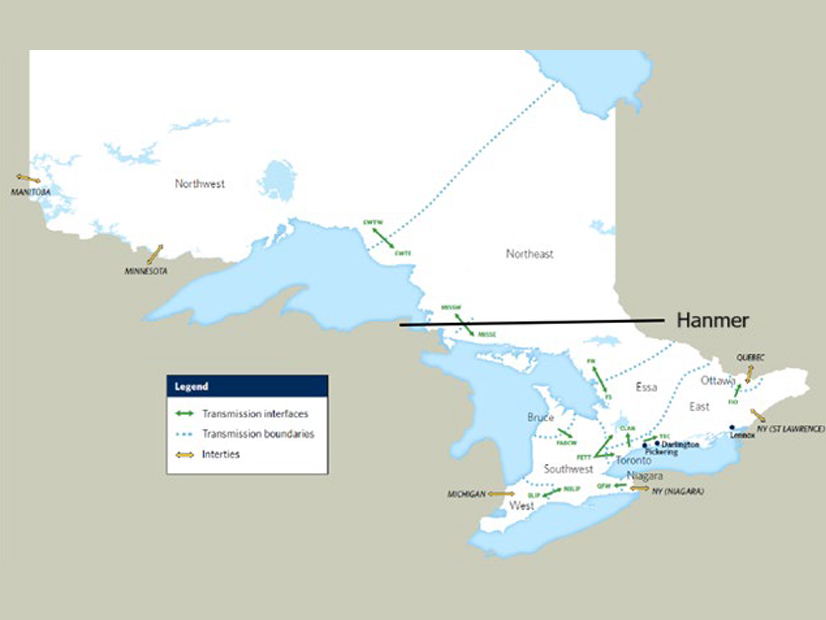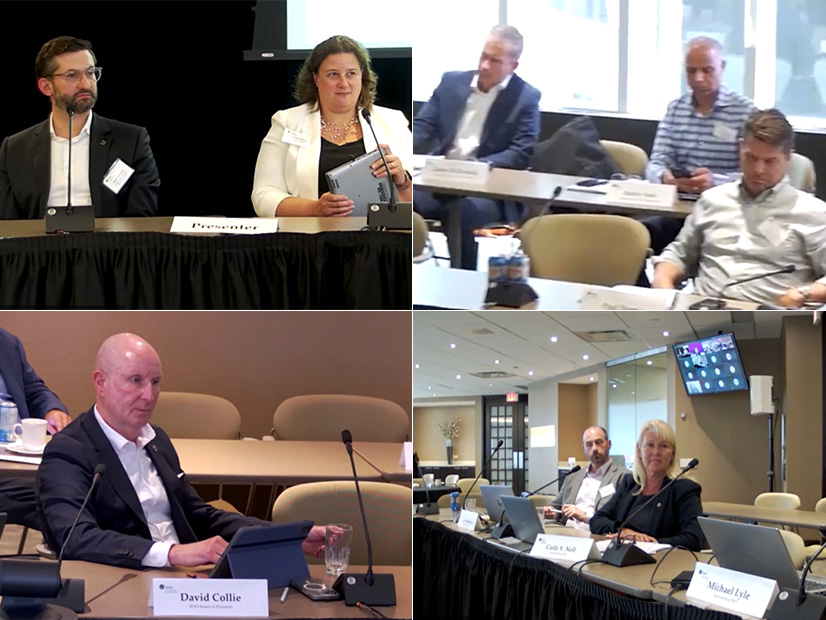SPP is celebrating several recent FERC orders that have strengthened its resource adequacy framework and will secure a “reliable energy future” for its region.
The orders came in a flurry of filings related to resource performance and a one-time, accelerated pathway for new resources to help meet reliability needs through 2030.
On July 18, FERC approved the RTO’s performance-based accreditation (PBA) and effective load-carrying capability (ELCC) methodologies (ER24-1317). Three days later, the commission approved SPP’s proposed Expedited Resource Adequacy Study (ERAS) that allows load-responsible entities to nominate qualified projects for fast-track reviews (ER25-2296). The ERAS approval is conditional upon the grid operator making a compliance filing within 30 days.
FERC also issued orders allowing SPP and MISO to include ERAS projects in their Joint Targeted Interconnection Queue (JTIQ).
SPP said the regulatory milestones are “pivotal steps” toward achieving the forward-looking RA posture it has championed in recent years.
“FERC’s approval of these two cornerstone initiatives affirms SPP’s vision and the collaborative spirit of our members, regulators and stakeholders,” CEO Lanny Nickell said in a statement. “The ELCC and PBA methodologies provide a modern, fair and transparent approach to accrediting resources, and the ERAS process empowers our region to respond quickly to rapidly growing demand.”
In making its ERAS filing in May, SPP said its region “is on the precipice of a resource adequacy crisis” and that it expects available capacity to drop below the balancing authority’s reserve margins by 2027. It said the region might run out of capacity to meet peak demand in 2030, as the footprint’s forecast demand has increased significantly. Data centers’ large loads and other technologies have further accelerated increased demand, the RTO said.
SPP said it expects to grant generator interconnection agreements by the end of March 2026.
Eight governors from SPP states jointly filed in support of the ERAS proposal, and several regulatory commissions intervened. LREs said that ERAS complements, rather than supplants, the grid operator’s reliability laws and processes because it offers an interconnection timetable that can accommodate resources that stem from competitive procurements already mandated by state law.
However, public interest groups and clean energy developers opposed the proposal, as they did when it went through the grid operator’s stakeholder process. They argued that ERAS amounts to queue jumping, bypasses open access to the RTO and violates the FERC’s principle of nondiscriminatory access to the grid. (See SPP Board OKs 1-time Study for LREs’ Gen Needs.)
“This is an affront to open access and a major and significant problem for those exploring whether or not to invest in SPP,” the Advanced Power Alliance’s Steve Gaw said during the Board of Directors’ consideration of the proposal.
FERC instead found that SPP has “existing authority” under its tariff to evaluate and maintain resource adequacy and to manage its interconnection queue to provide sufficient generation to meet RA requirements. It agreed with SPP that ERAS requests will receive a GIA “significantly sooner” than those processed through the RTO’s normal study process.
“As SPP explains, the one-time, limited ERAS proposal will allow SPP to accelerate the study of interconnection requests that are uniquely ‘shovel ready’ and that have been identified to meet an LRE’s near-term resource adequacy needs,” the commission said. “The ERAS proposal will enable resources to meet projected near-term resource adequacy needs more quickly than could be accomplished under SPP’s current interconnection [study] process.”
FERC on July 21 also approved MISO’s second attempt to create a fast track for certain reliability-related projects in the queue. It had rejected an earlier version in May. (See related story, FERC Approves MISO Interconnection Queue Fast Lane.)
The American Clean Power Association said both ERAS orders are a “dangerous misstep” that ignore “widely acknowledged market realities while signing off on the potential for major disruption for projects that have gone through the proper processes to be connected to the grid.”
“The fastest-growing sources of energy — solar, wind and energy storage technologies — are the ones ready to deploy to help keep costs lower and power reliable … across both territories,” ACP’s Carrie Zalewski, vice president of markets and transmission, said in an email. “Maintaining reliable and affordable power requires a diversified grid and predictable measures to bring new resources online.”
Zalewski said the organization is committed to advancing its shared goal and responsibility “to ensure these approved requests do not set a precedent that will cause lasting damage.”
She said states with higher amounts of clean energy have seen an increase in reliability and lower electricity prices on average. Zalewski cited the 2025 polar vortex — when prices rose only 20% in Texas and California but more than 135% in MISO — and SPP’s performance during a summer 2024 heat wave as examples.
The fast-track process is expected to mostly produce gas-powered resources, according to the Sierra Club. It noted several states in the RTOs’ footprints have recently passed laws that allow utilities to increase rates to finance new gas-burning power plants years before they provide a service.
“FERC’s decisions make it possible for gas plants to cut in line at the expense of thousands of clean energy projects that have been waiting for years to interconnect, projects that are well qualified to meet MISO’s and SPP’s energy needs,” senior attorney Greg Wannier said in a statement.
SPP currently has more than 30 GW of thermal generation in its queue, or about 19% of the total.
ELCC, PBA Methodology Approved
SPP said FERC’s approval of its modern accreditation methods for wind, solar and storage and a PBA for traditional resources affirms its “new, data-driven approach to resource accreditation.”
The RTO said it will be able to more accurately measure each generators’ reliability and ensure they are dispatched and compensated for their “real-world performance.”
“This gives utilities and grid operators better tools to plan for and maintain a reliable grid,” SPP said.
Commissioners David Rosner and Judy Chang filed a joint concurrence, noting “numerous” parties raised several methodological concerns with SPP’s proposal.
“However, despite the concerns, commenters nonetheless appear to universally recognize that SPP’s proposal is an improvement over the status quo,” they wrote. “Given the growing urgency of the resource adequacy challenge in SPP, we are persuaded that the commission should accept this just and reasonable improvement.”
SPP filed the tariff change in February 2024. The commission accepted the ELCC and PBA revisions, suspending both and consolidating them for paper hearings. That gave parties a chance to renew or modify their arguments after the grid operator added a fuel-assurance incentive to its PBA methodology. (See FERC Approves SPP Price Formation Rules; Needs More Time on Resource Accreditation.)
FERC rejected SPP’s first attempt to add ELCC (the amount of incremental load a resource can dependably and reliably serve during peak hours) in 2023. (See SPP Markets and Operations Policy Committee Briefs: Oct. 16-17, 2023.)
JTIQ to Use ERAS
The commission also issued separate letter orders July 21 allowing SPP and MISO to include ERAS projects and coordinate their study in the RTOs’ JTIQ initiative (ER25-2297, ER25-2461).
FERC found the proposed revisions to the joint operating agreement to be just and reasonable, saying they clarify how an affected-system coordination process built for multiphase cluster studies will apply to ERAS interconnection requests. The commissions also said the proposed revisions ensure that ERAS requests meeting JTIQ criteria will be included in the initiative’s portfolio.
The grid operators filed their identical JOA changes in May. The JTIQ framework enables MISO and SPP to develop a portfolio of “backbone network upgrades” to facilitate the interconnection of large amounts of generation near their joint seam. The framework includes a process for determining which requests from the RTOs’ interconnection studies will participate in the JTIQ by identifying groups of eligible requests.
The SPP order is effective July 22 and the MISO order Aug. 6.
HVDC Interconnection OK’d
FERC also accepted in another letter order SPP’s tariff revision outlining the planning process for evaluating the interconnection of HVDC facilities to its transmission system, effective July 23 (ER25-2309).
The commission said SPP’s proposal set a general process for evaluating requests to interconnect HVDC facilities, including defining applicable terms, identifying relevant entities and their responsibilities, describing study processes for evaluating an HVDC request, and assigning responsibility for study deposits and costs.
It said the tariff revisions increase transparency into the HVDC interconnection planning process, with implementation details “further specified in the SPP planning criteria and related operational documents.” FERC also found the revisions allocate responsibility for the interconnection study’s costs to the HVDC customer.

